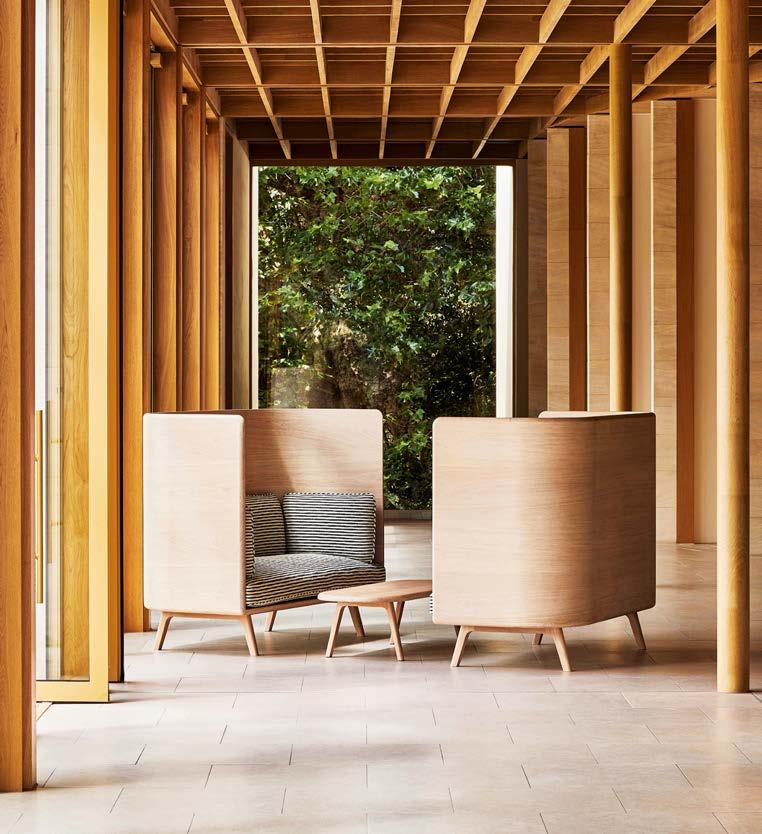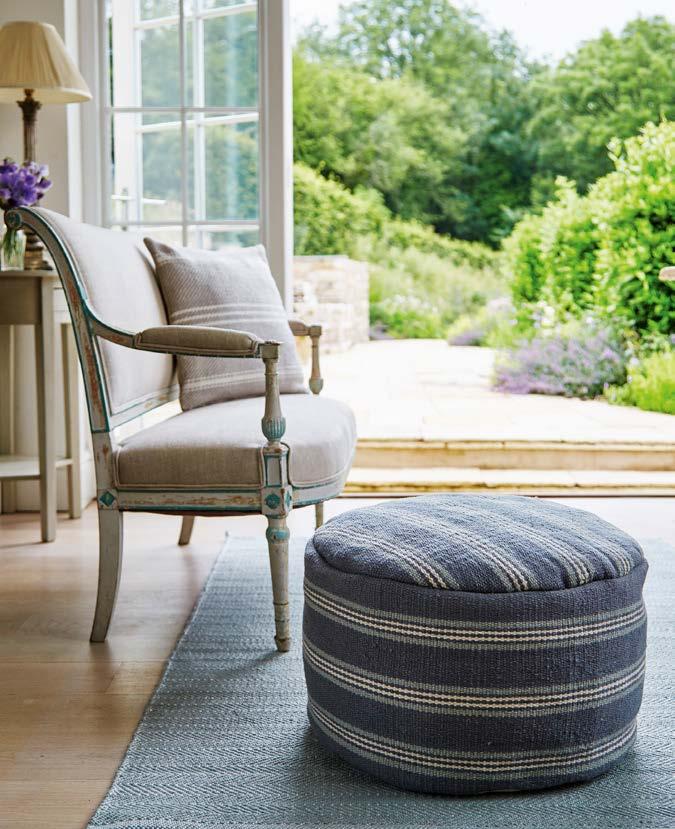
13 minute read
STYLE WITH A CONSCIENCE How to make sustainable decorating choices
Style with A CONSCIENCE
Discover ways to make decorating choices that are sustainable, considered, innovative and enduring, from textiles to furniture
Sustainability and care for the environment are watchwords for today and the furnishings we choose for our homes are part of this story. Some furniture and fabric companies are long-time members of the sustainable movement, others have recently joined. Their aim is to source raw materials with a fully accountable back story.
AGEING BEAUTIFULLY Antique and vintage pieces are emerging as significant flag-wavers for the movement. They salute the enduring value of things well-made. Buying at auction and seeking treasures in reclamation yards is an open secret, increasingly shared. Irene Gunter is one interior designer who sources antiques to add panache to her contemporary interiors, and Henriette von Stockausen is another designer who keeps an eye on auction sites and buys antique Howard sofas whenever she finds them. “They were so well made,” she declares. “All they need are new covers.”
That naturally leads to asking if new furniture can be made to the same standards as in the past. It was in the mind of interior designer Tara Craig when looking to commission upholstered seating and headboards for her Ensemblier collection. “I was conscious of the demise of craftsmanship and wanted my pieces made by workshops employing apprentices to learn from master upholsterers all the skills and traditional materials, from certified indigenous woods to handsprung base, back and arms, hair squabs and downfilled cushions. We must start pushing the furniture industry to change,” she states. “When you buy a sofa, you should have it for life.” Hers come with this assurance and so does furniture from antiques dealer and designer Max Rollitt.
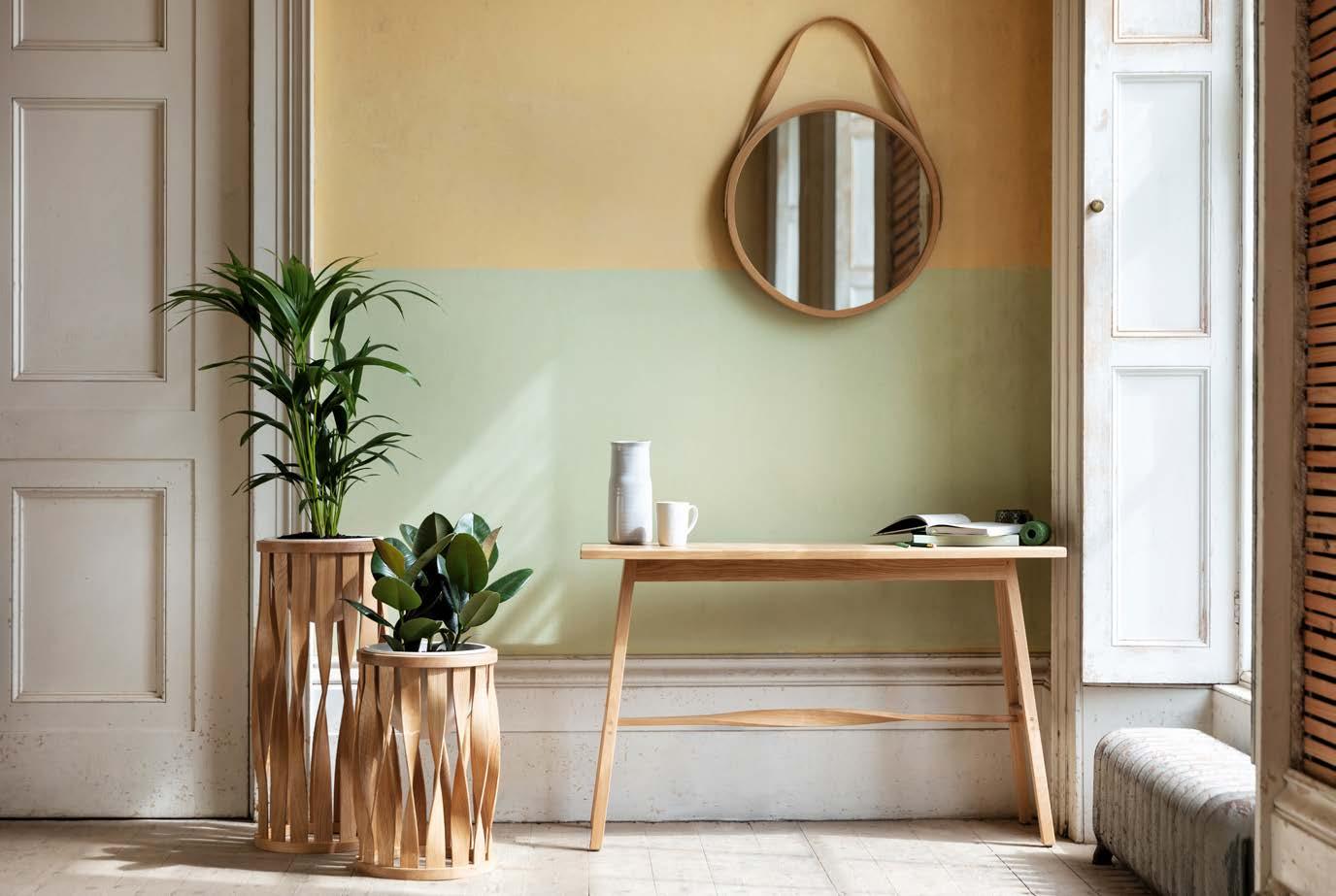
INTO THE WOODS Not all new furniture carries the same assurance as the antique, but companies are showing an increased commitment to levels of sustainability. Look out for the Forest Stewardship Council (FSC) logo – a tick on a tree – given to wood from forests meeting the highest environmental standards. Benchmark, established in 1984 by Sean Sutcliffe and Terence Conran, was aware from the beginning of the importance of a sustainable profile. “Trees take carbon out of the atmosphere and capture it for the long term in the wood used,” Sutcliffe explains. “All the timber we work with can be traced back to the sustainably managed forest where it was grown. We prefer working with temperate hardwoods – ash, oak, sycamore and walnut – sourced as close to home as possible.”
Some furniture makers are even more hands on, among them Sebastian Cox, whose portfolio includes
ABOVE These timeless pieces of furniture celebrate the art of steambending timber from responsibly managed forests. Merryn floor-standing planters, from £695 each; Crib oak console table, £795, both Tom Raffield OPPOSITE This sitting room is given a relaxed mood with furniture and accessories in linen. Sofa, Casual Dove (linen/cotton), £145 a metre; curtains, Windward Cement (100 per cent linen), £120 a metre, and all other linens, Mark Alexander
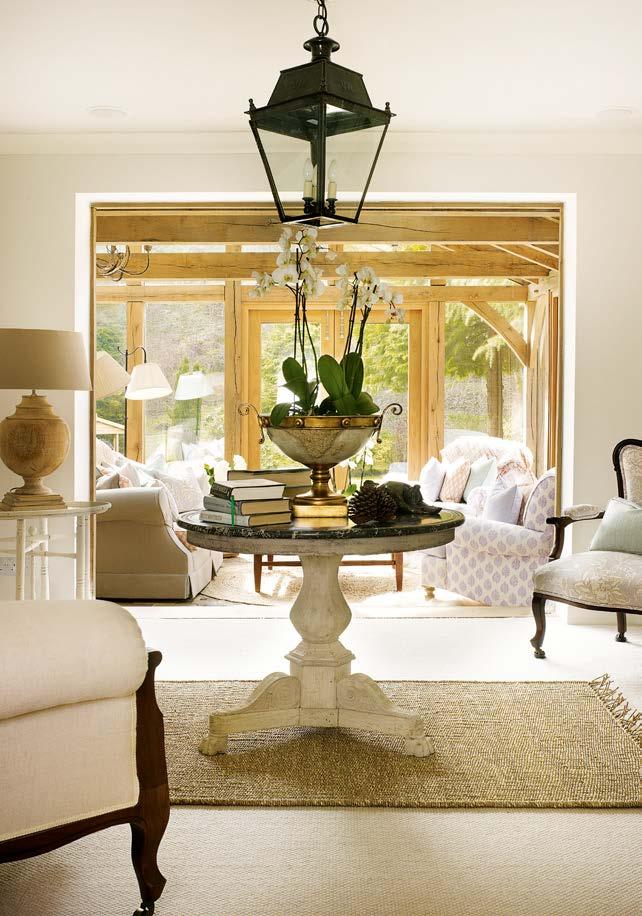
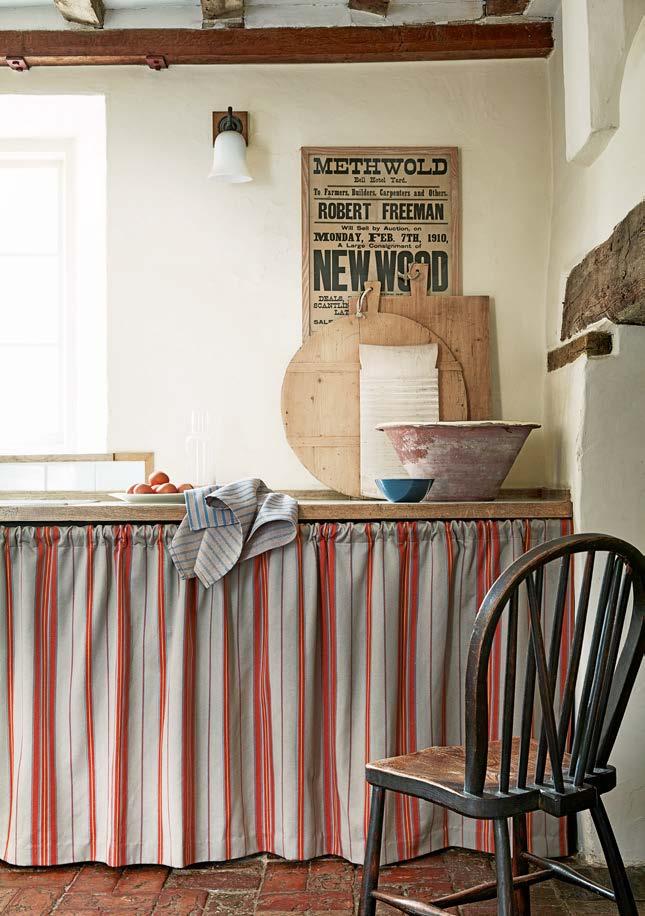
ABOVE The mindful scheme for this orangery includes pure linen fabrics from British makers sourced at Tissus d’Hélène, an antique chaise, flower table and tray table. Interior design, Victoria Meale. ABOVE RIGHT Curtaining under a kitchen worktop is a traditional alternative to cupboards. Sackville Stripe Russet linen, £47.50 a metre, 1485 Collection in association with the Landmark Trust at Ian Mankin kitchen design for deVOL. His pieces incorporate coppiced timber from his own four-acre ancient woodland. “Coppicing is a long-established method of cutting trees just above ground level every 10 or 15 years,” he explains. “It creates vigorous growth and encourages bio-diversity.” His woodland includes hazel, birch, hornbeam, sweet chestnut and ash, and he purchases other wood from family-run timber mills having established relationships with local estates where selective tree-felling is part of the woodland’s natural regeneration.
STEAMING AHEAD Angus Ross is another independent furniture maker and his wood comes from a 50-acre collective owned with four other families, one member a specialist in native woodland. “Our woodland is planted with mature oaks, some which are up to 300 years old,” Ross says. “Until the First World War, these were coppiced over a long period, meaning the wood cut from that growth is quite spindly. Steam bending allows us to use narrow planks of oak and ash that are not normally considered suitable for furniture making.” Combining different techniques takes advantage of the wood from his collective as well as managed native hardwoods from nearby estates, and has become a signature part of Ross’s repertoire. Tom Raffield is maker with an exemplary sustainable record who bases his designs for furniture and lighting on steam bending, a skill he discovered as part of a degree in 3D Design for Sustainability. “Steam bending is a low-energy, ecological method of manipulating wood with very low levels of wastage,” he explains.
CLEVER ASSOCIATIONS Another Country is a young furniture company inspired by British, Shaker, Scandinavian and Japanese traditions. Its ethos promises furniture of enduring quality in sustainably sourced wood and manufacturing that limits waste at every stage. It has even linked up with bed company Naturalmat to procure natural and organic fillings for its upholstery.
Naturalmat is well-known for its beds and uses a breathable combination of natural materials for its mattresses and bases which translates very well to upholstery, too, as other furniture makers have noted. “Combining wool, natural latex foam and coir fibre, wicks away moisture and allows the ventilation essential to a healthy mattress,” says Mark Tremlett, co-founder. “Wool is also a natural insulator. We buy locally, direct from the farmer, then have it scoured and needled. The wood in our bases is European pine and larch from managed European forests.”
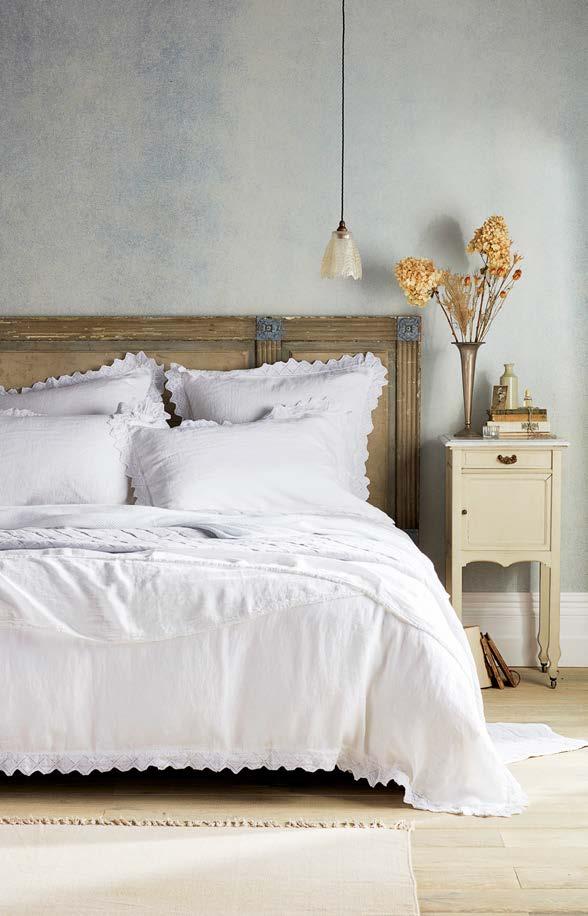
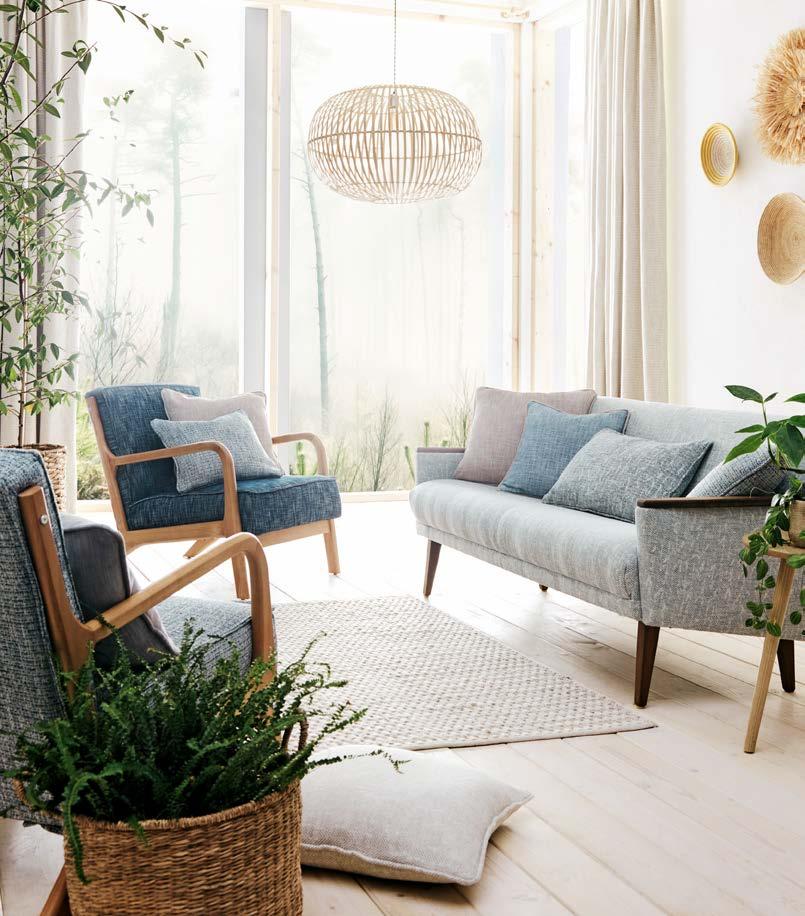
Rattan comes a long way, from the forests of South East Asia, but is otherwise a true eco contender; it is renewable, grows exceedingly fast without chemical intervention and is biodegradable. Lulu Lytle at Soane Britain super-charged its status here when she acquired the last rattan workshop in England to keep alive the extraordinary skill of its weavers. “We create new designs, adaptations of antiques and one-off pieces,” she says.
CONTINUING YARNS Deciding on fabrics for furnishings is a complex affair when taking eco issues into account. Many weaves and prints combine a number of yarns, each offering a particular characteristic. Most yarn sources start out with good natural credentials, but their production routes can tell a different story, complicated by the input of toxic chemicals and the quantity of water needed for growing and production.
Linen from the flax plant rates highly when grown in northern Europe, usually without fertilisers, pesticides or irrigation. After flowering, it is cut and left to lie in the fields in a process known as dewretting during which the stems’ tough outer-casing breaks down and the long flax fibres can be extracted by knife or machine. Interiors textiles specialist Bernie de Le Cuona’s love of linen led her to introduce her first 100 per cent organic linen collection, Pure, in 2020, followed by organic linen bedlinen. “I wanted to be sure that every harmful chemical was excluded from production, including in the dyes. Linen, whether it is sheer or rustic, has utilitarian elegance,” she enthuses.
Even linen weaves not certified as organic rate highly, though only 100 per cent linen is chosen by Victoria Meale, an interior designer conscious of the eco implications of every choice she makes for her clients’ homes. “I always look at pure linen for curtains and find out whether it has come from Europe,” she says. “In fact, I’m just organising the return of a client’s sofa that’s been reupholstered in a very beautiful linen and that’s given me such joy.”
Hemp and bamboo are other hardy, fast-growing plants with a high eco-rating, though they are only beginning to have a significant presence on the interiors scene. Hemp makes a good linen lookalike and bamboo is gaining popularity as bedlinen.
COTTON PICKING Cotton is the main or secondary yarn in thousands of weaves for fashion and the interior, but to keep costs down and crop yields high requires fertiliser, herbicides and pesticides, and uses vast quantities of water. Fabric designer Vanessa Arbuthnott came face to face with the truth when she went to India and
ABOVE LEFT This bedding is in soft 100 per cent linen, an eminently sustainable fabric that gets softer with each wash. Violet bed linen in white, from £32, The Secret Linen Store ABOVE Using yarn spun from recycled plastics, these fabrics have a high abrasion rating, excellent for use on upholstery. Avani, Gaia, and Tierra, £42 a metre, Eco collection, Clarke & Clarke
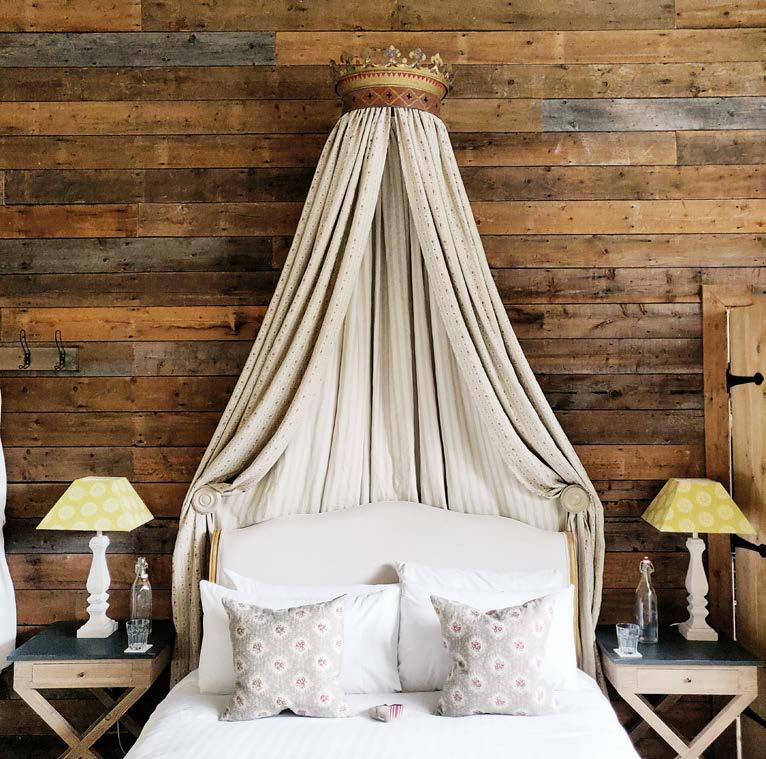
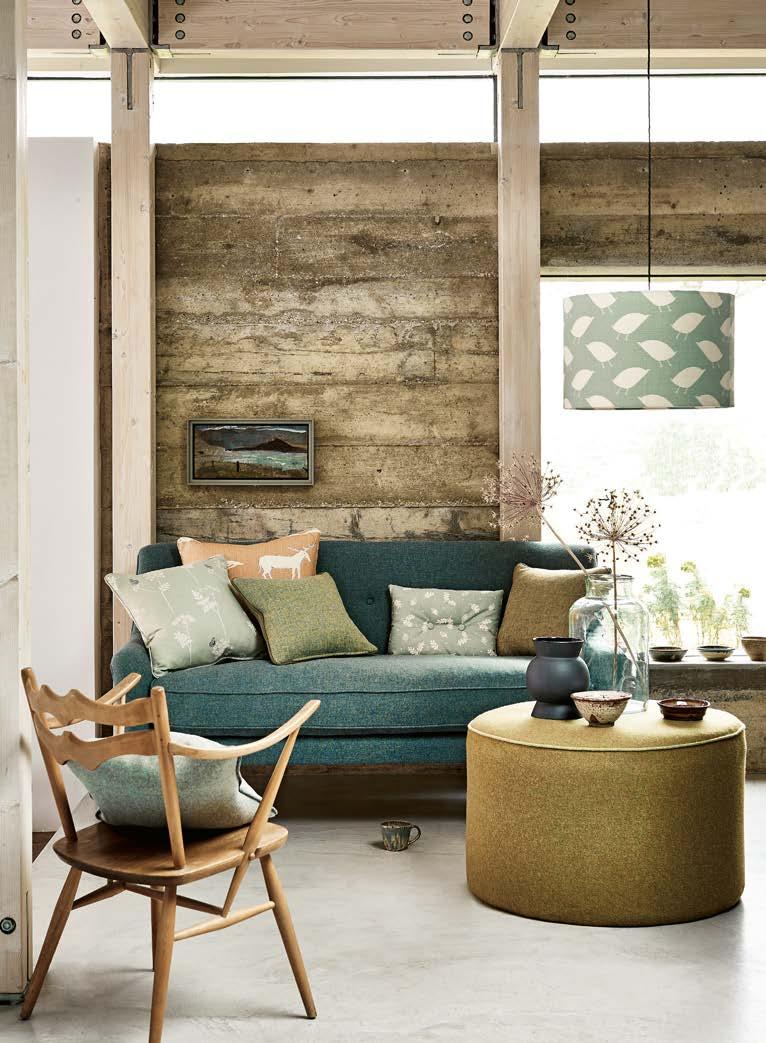
looked for cotton fabric for printing. “I was suddenly aware of the damage being done to the cotton, and the people working with it, from all the chemical agents and the amount of water needed to grow it, with pickers getting chemical effluent in the water on their skin,” she says. “There is a lot of disease and death around cotton production, and since that time I’ve only used organic cotton in my fabrics. It needs a larger area to grow and gives a lower yield, which makes it more expensive.”
More companies are now weaving with organic cotton, among them David Collinge, who owns Ian Mankin and the Lancashire mill weaving his fabrics. “Our mill is Soil Association registered,” he says, “and we buy organic yarns from established suppliers. Many cotton farmers can’t afford all the pesticides,” he adds, “which accounts for the increased availability of organic cotton.”
ANIMAL FARM Wool from sheep and silk from moth cocoons have eco-credentials not shared by other yarns. Wool is natural, durable, biodegradable and inherently fire retardant, a star quality for furnishing homes, hotels and commercial interiors.
Much of the wool for furnishings comes from warmer climates, particularly Australia and New Zealand, where sheep grow finer fleeces than hardier British breeds. Britain does have notable wool weavers though, including Abraham Moon, Bute Fabrics, The Isle Mill and Johnstons of Elgin, each producing 100 per cent wool weaves from wool satin to tartan. Interior designer Irene Gunter is a fan. “Nothing beats wool for the way it drapes. I choose denser qualities for upholstery, often from The Isle Mill or de Le Cuona.”
Wool from British sheep has a variety of furnishing uses including in mattresses, duvets and some textiles, particularly tweed. Vanessa Arbuthnott discovered tweed when her daughter visited the Hebrides and brought back samples of cloth woven there. “Fleeces come across from the mainland, are cleaned and dyed, mixing five colours for a subtle melange,” she says. “Then the wool is spun and the yarn goes to the weavers, who weave the fabric in their own homes on the island. I chose four colourways that reflect the islands for my Harris Tweed collection.”
Silkworms are reared on mulberry leaves by small communities in China and India. Silk has two extraordinary features: each cocoon yields around 900 metres of thread, and this has a tensile strength
TOP LEFT Every textile element in this bedroom is made using 100 per cent sustainable linen. Beauclerc Stripe, Damson, £120 a metre; Torchon Stripe, Mouse, £110 a metre; cushions, Posy, Truffle, £120 a metre; lampshades, Ronda, Pyrus Green, £110 a metre, all Inchyra LEFT These Harris tweeds in pure new wool are dyed and spun in the Outer Hebrides and woven in weavers’ homes. Harris Tweed, £78 a metre, Vanessa Arbuthnott

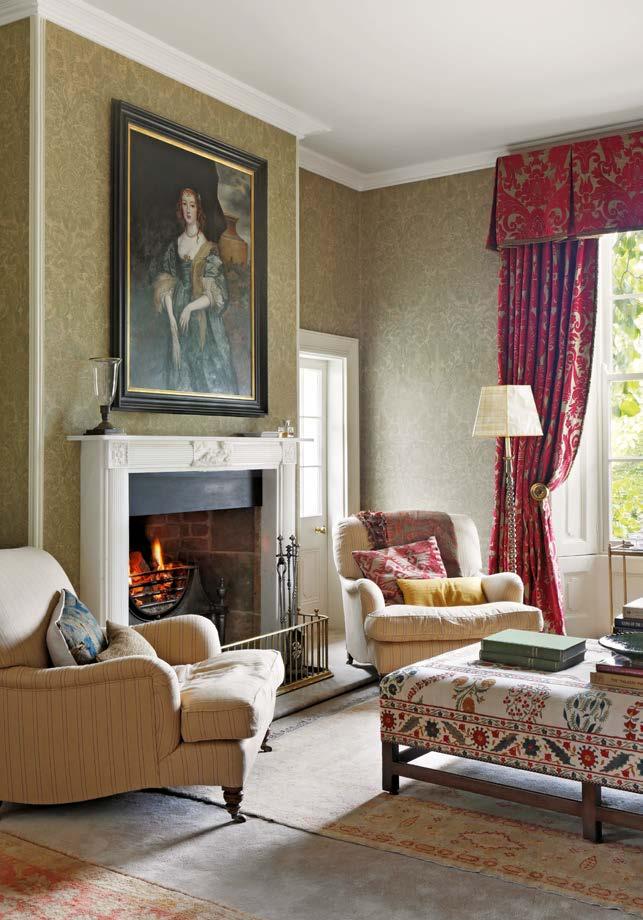
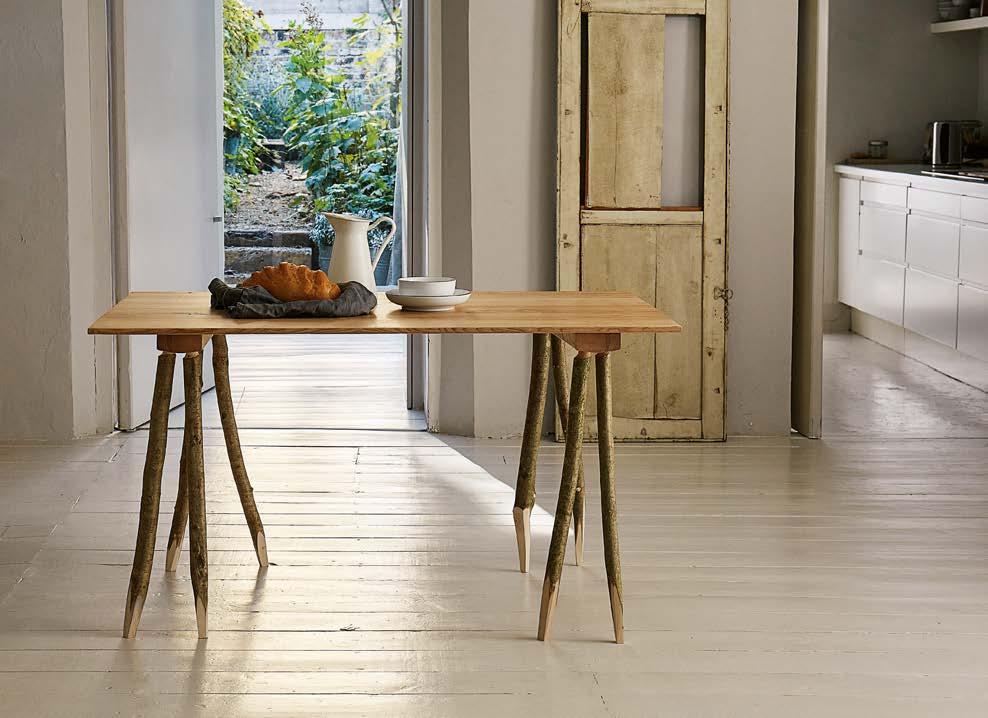
ABOVE LEFT Designed by Sebastian Cox, this kitchen for DeVOL is in sustainable English timber such as beech and ash. It is dyed blue-black to stain, rather than coat, the wood. ABOVE Antique Howard chairs offer traditional comfort in a sitting room where antique Turkish and Aubusson textile pieces, such as the cushions and ottoman cover, celebrate the inspired use of pieces with a past. Interior design, Henriette von Stockhausen at VSP Design. LEFT This table has a solid ash top, and legs in coppiced Kentish hazel, hand-hewn to a taper with an axe. Hewn Trestle Table, £540, Sebastian Cox
described as equivalent to that of steel. The thread is incredibly fine and usually six or nine threads are spun together to make usable yarn. “Smooth regular yarn, such as for taffeta, has to come from China,” says Saffron Hare of silk specialist James Hare, “and textured wild silk comes from India. But it’s also good to know about Matka silk, as that’s upcycled from waste yarn filaments.”
THE RE-FORM MOVEMENT Polyester is a strong synthetic yarn present in many furnishing fabrics and, like plastics, a by-product of the oil industry and non-biodegradable, therefore harmful to the environment. So, it is heart-warming to find a growing number of recycled textiles for the interior derived from waste plastics.
Barney and Tasha Green were among the first to recognise the possibilities when travelling in Asia, where they saw a boat tethered with rope made from reconstituted plastic bottles. Already knowledgeable weavers and committed environmentalists, they spent several years at their base in Cornwall looking at how to transform plastic bottles into yarn. They founded Weaver Green to convert their hardwearing new yarn, soft as wool, into washable woven indoor-outdoor rugs, cushions and throws.
Kirkby Design, part of the Romo textile group, has just launched three semi-plain jacquard weaves in the Flow collection that are all made from recycled plastic bottles. Meanwhile, Clarke & Clarke has introduced Eco, a weave made from plastic waste.
Within the textile industry there is growing acknowledgement of the huge quantity of fabric waste, much of it from fashion. Kirkby Design is at the forefront again, adding new colours to its Leaf collection, which takes wool from discarded clothing, knits and off-cuts from the fashion industry, sorts them by colour before shredding, blending and spinning them into new yarn, ready to be woven. The gentle tweed effect of this 100 per cent wool weave also has a good rating for upholstery.
As more companies take environmental issues seriously, it will be easier to make informed decisions when buying for our homes. Not many of us change curtains on a whim or decide a decent sofa is too ‘last year’, so perhaps it is wardrobe doors that should be locked and bolted, as discarded fashion garments form the biggest mountains of textile waste in the world, not furnishing fabrics. Even so, the message now is to look for potential in the things we have before replacing them. Think recovering, painting, repairing or dyeing before purchasing new. ‘Buy to last’ is a proclamation we have all heard before. Now it is just getting louder. n
TOP RIGHT This sofa with oak wrap-around back and sides, has a white oil finish and all natural filling upholstery. The Sage High Sofa, from £6,950, Benchmark Furniture RIGHT The footstool and rug are woven in yarns made from recycled plastic bottles. The end result feels soft as wool. Footstool, Dove Grey Henley Stripe, £189; rug, Dove Grey Herringbone, from £40, both Weaver Green
